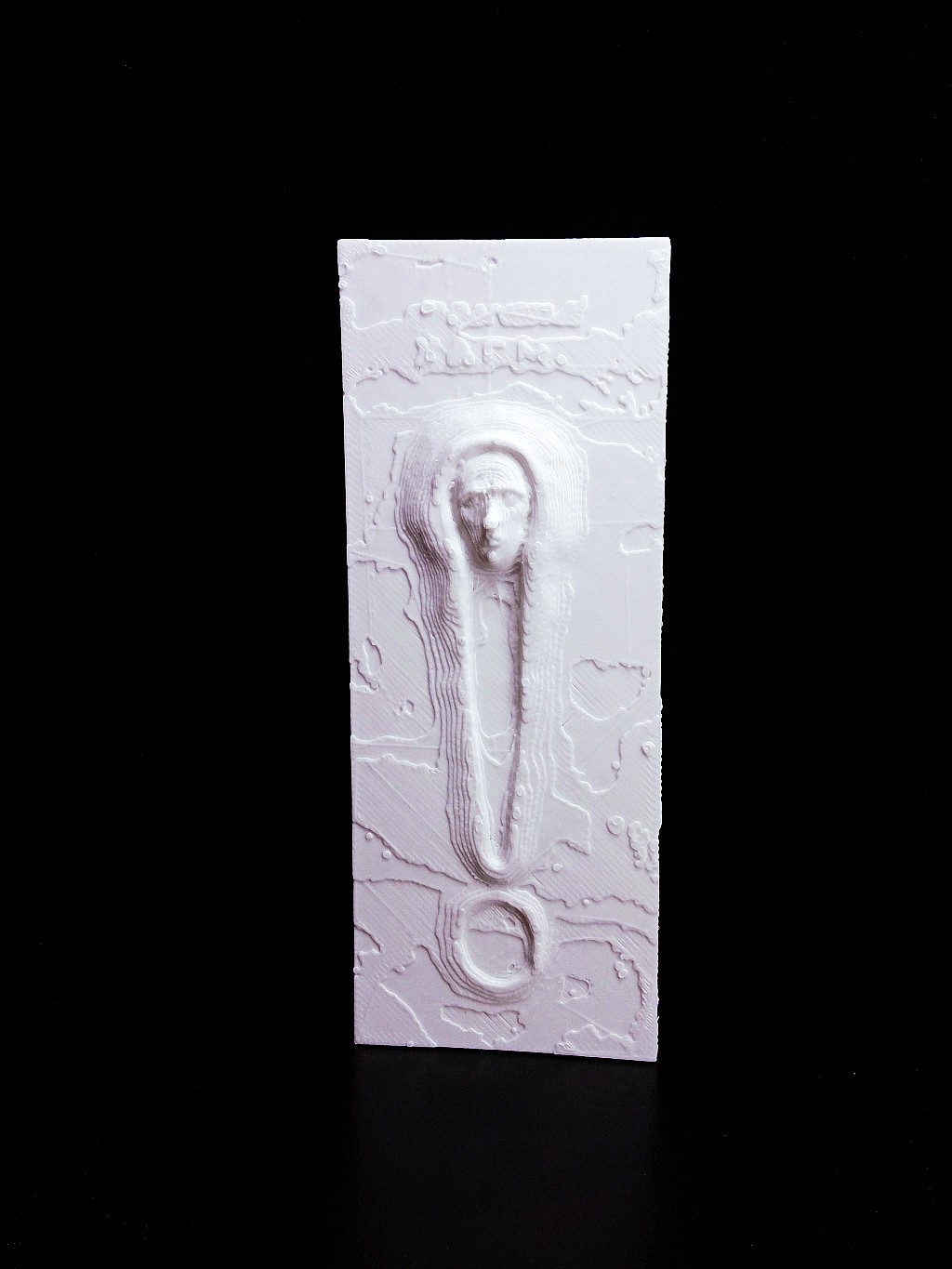
Relief
myminifactory
-- Who is depicted? We can presume that the personnage is the artist himself, someone with this face. -- Technical/Specification about the statue Relief is a sculptural technique where the sculpted elements remain attached to a solid background of the same material. The term relief is from the Latin verb relevo, to raise. To create a sculpture in relief is to give the impression that the sculpted material has been raised above the background plane. What is actually performed when a relief is cut in from a flat surface of stone (relief sculpture) or wood (relief carving) is a lowering of the field, leaving the unsculpted parts seemingly raised. The technique involves considerable chiselling away of the background, which is a time-consuming exercise. On the other hand, a relief saves forming the rear of a subject, and is less fragile and more securely fixed than a sculpture in the round, especially one of a standing figure where the ankles are a potential weak point, especially in stone. In other materials such as metal, clay, plaster stucco, ceramics or papier-mâché the form can be just added to or raised up from the background, and monumental bronze reliefs are made by casting.There are different degrees of relief depending on the degree of projection of the sculpted form from the field, for which the Italian appellations are still sometimes used. The full range includes high relief (alto-rilievo, haut-relief), where more than 50% of the depth is shown and there may be undercut areas, mid-relief (mezzo-rilievo), low-relief (basso-rilievo, or French: bas-relief /ˌbɑːrɪˈliːf/), and shallow-relief or rilievo schiacciato, where the plane is only very slightly lower than the sculpted elements. There is also sunk relief, which was mainly restricted to Ancient Egypt (see below). However the distinction between high relief and low relief is the clearest and most important, and these two are generally the only terms used to discuss most work.The definition of these terms is somewhat variable, and many works combine areas in more than one of them, sometimes sliding between them in a single figure; accordingly some writers prefer to avoid all distinctions. The opposite of relief sculpture is counter-relief, intaglio, or cavo-rilievo, where the form is cut into the field or background rather than rising from it; this is very rare in monumental sculpture. Hyphens may or may not be used in all these terms, though they are rarely seen in "sunk relief" and are usual in "bas-relief" and "counter-relief". Works in the technique are described as "in relief", and, especially in monumental sculpture, the work itself is "a relief". -- More about the artist Daniil Kharms was a poet, short story writer, dramatist and a representative of avant-garde trends in Soviet literature. During his lifetime Kharms was best known for his humorous children's stories. His other works, held in private archives, were rediscovered in the late 1960s and today his fame rests chiefly on his experimental, absurd prose pieces.
With this file you will be able to print Relief with your 3D printer. Click on the button and save the file on your computer to work, edit or customize your design. You can also find more 3D designs for printers on Relief.
